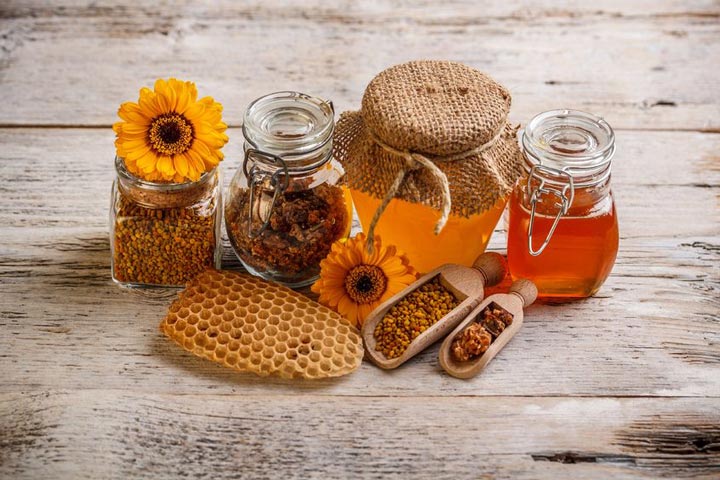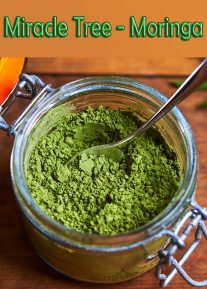
Guide To Using Natural Sweeteners
The following guidelines will help you transform your favorite desserts into more healthful treats.
| Sweetener Source | Characteristics | Baking with Natural Sweeteners |
| Pure maple syrup | From the sap of maple trees. Use in all baked goods; wonderful in cakes. | Substitute 2/3 to 1/4 cup maple for 1 cup white sugar. Reduce liquid in recipe by 3 tablespoons. Add 1/4 teaspoon baking soda per cup of maple syrup. Buy pure U.S. organic syrup. Some maple producers still use illegal formaldehyde pellets and other additives during processing. Store refrigerated. High in potassium and calcium. |
| Maple sugar | Dehydrated maple syrup. 93 percent sucrose; 1 percent to 3 percent invert sugars* | Use in all baked goods. Substitute 1 cup maple sugar for 1 cup white sugar. No reduction of liquid is necessary. Add 1/8 teaspoon baking soda per cup. Store in a tightly closed container and sift before using. Mix with liquid to make glazes. Organic is available. |
| Barley malt syrup | Sprouted barley. Maltose, glucose, complex carbohydrates: 3 percent protein from malt. Dark brown, thick and sticky; has a strong, distinctive flavor like molasses. Half as sweet as white sugar. | Best used in combination with other sweeteners. Wonderful in spice cakes, gingerbread, and baked beans. Substitute 1-1/3 cups barley malt for 1 cup white sugar. Reduce liquid in recipe by 1/4 cup. Add 1/4 teaspoon baking soda per cup barley malt. Purchase only 100 percent barley malt, not barley/corn malt syrup. Store refrigerated. Organic is available. |
| Brown rice syrup | Brown rice and various enzymes. Maltose, glucose, complex carbohydrates. Amber-colored syrup with mild “butterscotch” flavor. Half as sweet as white sugar. | Baked goods made with rice syrup tend to be hard or very crisp. Use brown rice syrup in cookies, crisps, granola, pies, and puddings. Combine with another sweetener such as maple for cakes. Substitute 1-1/3 cups for 1 cup white sugar. Reduce liquid 1/4 cup per cup rice syrup. Add 1/4 teaspoon baking soda per 1 cup rice syrup. Store refrigerated. Organic is available. |
| Honey | Extracted from flower nectar by bees. Fructose, glucose, sucrose. Color and taste depend upon the flower source. 20 percent to 60 percent sweeter than white sugar, so use less! | Use in all baked goods. Substitute 2/3 to 3/4 cup for 1 cup white sugar. Reduce liquid by 1/4 cup. Add 1/4 teaspoon baking soda per cup honey. Reduce oven 25°F and adjust baking time. Some vegans don’t use honey, as bees are sometimes killed after the season. Honey can affect blood sugar levels, as most concentrated sugars can. |
| Date sugar | Ground, dehydrated dates. Sucrose, glucose, fructose, and complex carbohydrates. Mahogany color, coarse granules. | Contains folic acid. Use in crisps, crunches, as sprinkle, or topping. Substitute 1 cup for 1 cup white sugar. Add hot water to dissolve date sugar before using in batters. Use in combination with other sweeteners. Burns easily. Purchase date sugar made from unsulphured, organically grown dates. Store in a tightly closed jar. |
| Granular fruit grape juice concentrate and rice sweetener syrup | Glucose, fructose, maltose, and complex carbohydrates. Light brown granules, brown sugar-like taste. | Use in cookies, crisps, granola, pies, puddings and cakes. Substitute 1-1/4 cups for 1 cup white sugar. Reduce salt 30 percent to 50 percent. Don’t overmix batters. Oil or line pans with parchment. Bake at 325°F to 350°F maximum and adjust baking time. Organic is available. |
| Mixed fruit juice | Peach, pear, grape, and pineapple concentrate juice are most common. | Use in all baked goods and desserts, especially spice, carob, and chocolate cakes. Substitute 2/3 cup for 1 cup white sugar. Reduce liquid 1/3 cup per cup of fruit sweetener. Add 1/4 teaspoon baking soda per cup fruit sweetener. Reduce oven 25°F and adjust baking time. Some concentrates are more acidic than others. Store in refrigerator. Use at room temperature. |
| Sucrose, some natural fructose | Generally amber-colored and fruity tasting. | Dried cane juice. Sugar cane, water removed. Minerals and molasses are retained. Use in cookies, crisps, granola, pies, puddings and cakes. Substitute 1 cup for 1 cup white sugar. Add 1/4 teaspoon baking soda per cup dried cane juice. Be sure to purchase organic. Any pesticides and chemicals used on the cane are concentrated during processing. Store in a tightly closed container and sift before using. |
* Sucrose and invert sugars. Amber-colored coarse granules, with a mild molasses-like taste.




Leave a Reply